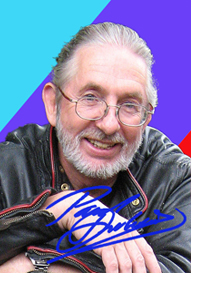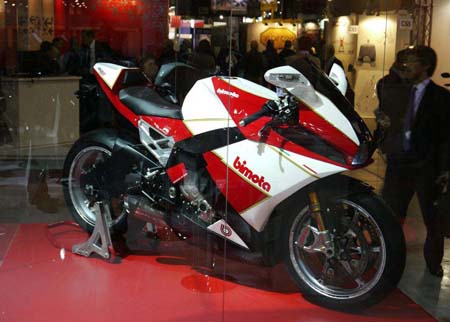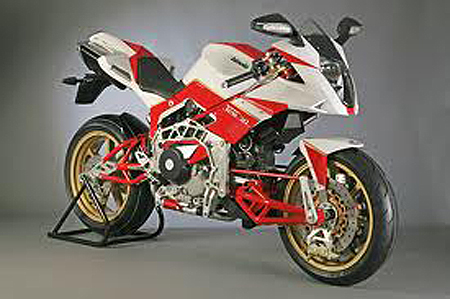Bimota Blessing Comes To The BMW S1000 RR
 It might sound a bit too much like Inside Baseball, but BMW Motorrad received a nice pat on the back this week in Milan when Italian motorcycle manufacturer Bimota announced that it will power its next über-sportbike with the S1000 RR engine. That means it’s the best motor the Rimini craftsmen can find—and also that it has more potential.
It might sound a bit too much like Inside Baseball, but BMW Motorrad received a nice pat on the back this week in Milan when Italian motorcycle manufacturer Bimota announced that it will power its next über-sportbike with the S1000 RR engine. That means it’s the best motor the Rimini craftsmen can find—and also that it has more potential.Having enjoyed a tour of the Bimota factory before I raced a 1958 Ducati 125 Sport in the 2005 Motogiro D’Italia, I’d say that the company builds the most precisely constructed motorcycles in the world.
It also has a history of wringing more power from chosen motors than the originating manufacturer (very rare in Japanese instances). If memory serves correctly, a Suzuki-power Bimota SB1100 first broke the 200-mph mark for a naturally aspirated street bike, recording 202.248 in 1998 in North Carolina, at an airbase with drag-strip equipment, and on a 103º day.
Right now, BMW is on a roll. Land-speed racer Andy Sills just claimed a world record on a 2012 BMW S1000 RR at the Bonneville Motorcycle Speed Trials in August, recording a flying-mile two-way average speed of 204.784 mph.
Imagine what Bimota can do with that engine!
By choosing the inline four-cylinder power unit of the BMW S1000 RR—the first Bimota models back in the 1970s were powered by in-line fours, too—Bimota has gone for the most technologically innovative straight-four engine currently available—as usual. The DOHC engine weighs just 132 pounds, and generates 193 horsepower at 13,000 ropm.
Bimota boasts a long tradition of four-cylinder supersport motorcycles. For four decades, the name has stood for technologically innovative and painstakingly crafted bikes made for enthusiasts. The hub-steered Bimota Tesi is still the most sophisticated design in the world— look at an exploded diagram if you don’t believe me.
BMW Motorrad and Bimota collaborated once before, in 1995. The Italian company’s BB1 Supermono was powered by the engine of the BMW F650. The Supermono had an output of 48 horsepower, weighed just 368 pounds, and achieved a top speed of 122 mph. Only 376 of this light supersport bike were built between 1995 and 1996, and anybody who ever saw one race still remembers the lean angles.
Despite the presence of Ducati only 60 miles away in Bologna, and the fact that the company sponsors the Motogiro in honor of its first major win by Giuliano Maoggi in 1956, Bimota is the ultimate skunk works. Imagine Lamborghini testing a new Countach at 175 mph past the Ferrari works in 1971 and you get the idea.
Bimota was founded in 1973 by Massimo Tamburini (who went on to design the Ducati 916 and the MV Agusta), Valerio Bianchi, and Giuseppe Morri. “Bimota” comes from two letters of each of their names. The company has only built about 6,500 bikes, each characterized by superior performance and exquisite attention to detail.
Bimota model initials indicate the powerplant (HB is Honda, KB is Kawasaki, etc). For the record, there are believed to be 304 Hondas, 1,116 Kawasakis, 5,183 Yamahas, 2,946 Ducatis, 524 Rotax-powered Supermonos, and 315 V-dues, the company’s own ill-fated two-stroke twin, which bankrupted Bimota in 2001 (the company was revived three years later).
The tiny Bimota factory is buried in a housing suburb of Rimini and employs only 15 craftsmen, each of whom builds one complete bike every 42 to 45 hours, company spokesman Anacleto Bernabei told me. That adds up to about 500 bikes a year. Construction goes on in a 60-by-100-foot shop, where intricate frames for new models are lined up by the jigs that made them. The welds and details are more like jewelry than machinery, a reminder that the company began by making hydraulic pipe, a notoriously unforgiving medium for sloppy workmanship.
When I was at the factory, the dean of motorcycle journalists, Sir Alan Cathcart, was out testing the new Delirio as I talked to designer Sergio Robbiano. In a famous story now almost 30 years old, Bimota’s test riders complained that the groundbreaking Tesi was too hard to handle, until Cathcart begged a ride at Modena, and lapped close to the track record.
The rest, as they say, is history. I wonder what Sir Alan will think of the new BB 1000 RR?—Paul Duchene










